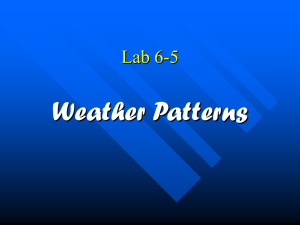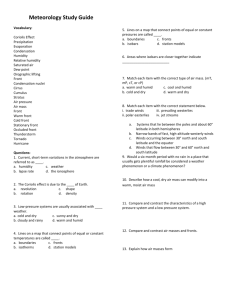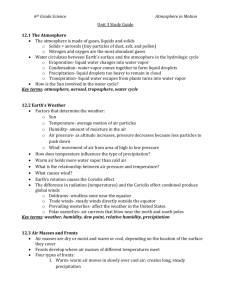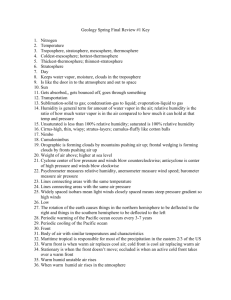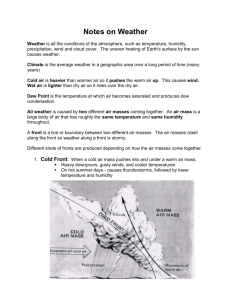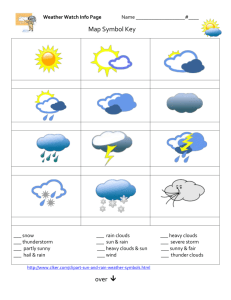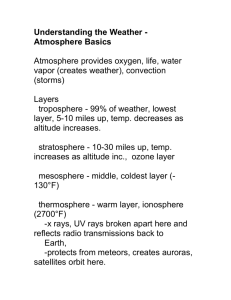7th Grade Science The Atmosphere Chapter 5 Study Guide Section
advertisement
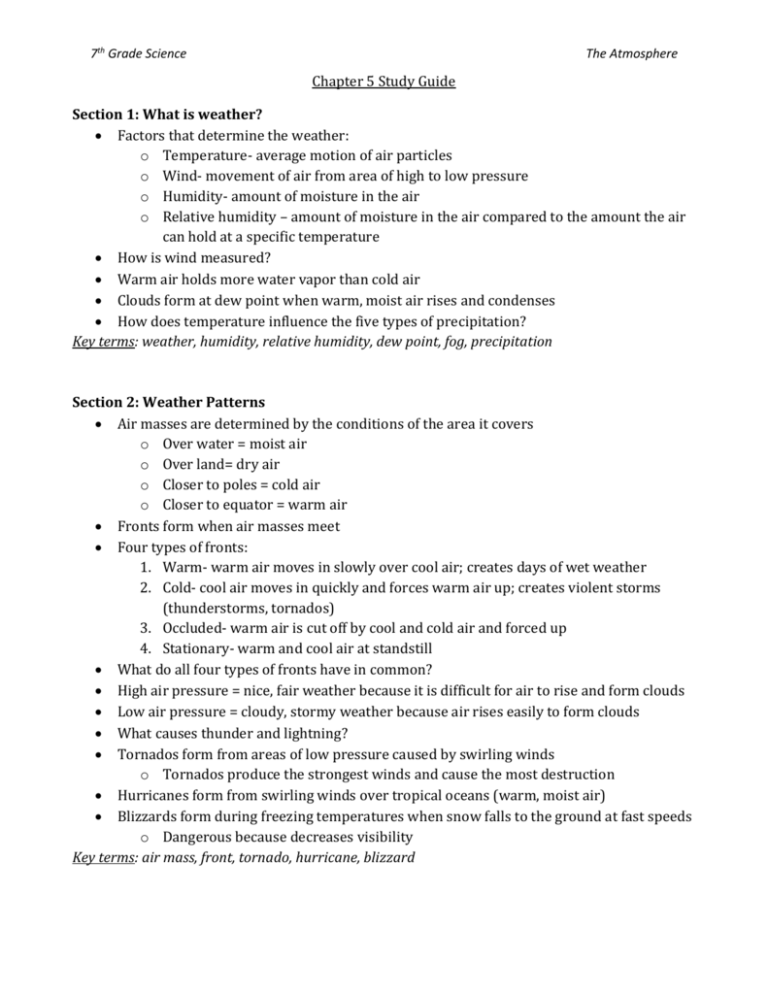
7th Grade Science The Atmosphere Chapter 5 Study Guide Section 1: What is weather? Factors that determine the weather: o Temperature- average motion of air particles o Wind- movement of air from area of high to low pressure o Humidity- amount of moisture in the air o Relative humidity – amount of moisture in the air compared to the amount the air can hold at a specific temperature How is wind measured? Warm air holds more water vapor than cold air Clouds form at dew point when warm, moist air rises and condenses How does temperature influence the five types of precipitation? Key terms: weather, humidity, relative humidity, dew point, fog, precipitation Section 2: Weather Patterns Air masses are determined by the conditions of the area it covers o Over water = moist air o Over land= dry air o Closer to poles = cold air o Closer to equator = warm air Fronts form when air masses meet Four types of fronts: 1. Warm- warm air moves in slowly over cool air; creates days of wet weather 2. Cold- cool air moves in quickly and forces warm air up; creates violent storms (thunderstorms, tornados) 3. Occluded- warm air is cut off by cool and cold air and forced up 4. Stationary- warm and cool air at standstill What do all four types of fronts have in common? High air pressure = nice, fair weather because it is difficult for air to rise and form clouds Low air pressure = cloudy, stormy weather because air rises easily to form clouds What causes thunder and lightning? Tornados form from areas of low pressure caused by swirling winds o Tornados produce the strongest winds and cause the most destruction Hurricanes form from swirling winds over tropical oceans (warm, moist air) Blizzards form during freezing temperatures when snow falls to the ground at fast speeds o Dangerous because decreases visibility Key terms: air mass, front, tornado, hurricane, blizzard Section 3: Weather Forecasts What instruments are used to forecast the weather? Meteorologists gather data from the surface and in atmosphere using instruments to make weather maps Station models indicate weather at a particular location Isobars vs. isotherms Isobars close together indicate strong winds Key terms: meteorologist, station model, isotherm, isobar Possible short answer/essay topics: 1. Weather factors 2. Fronts 3. Severe Storms
